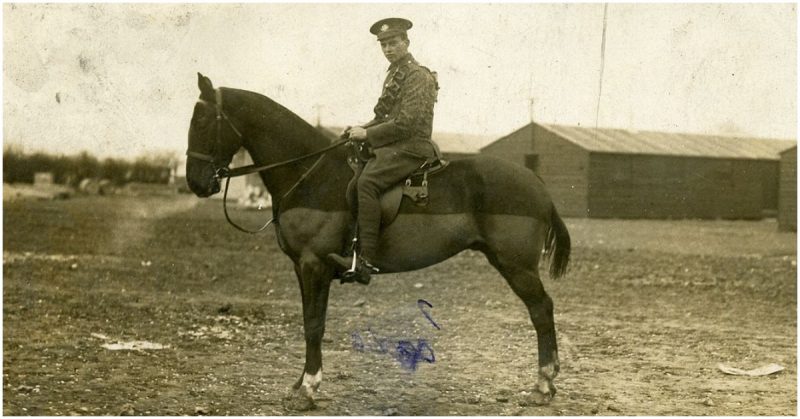The stone is green with age and moss, tilted by subsidence and the action of tree roots, but the words remain clear with “France and Flanders 1915-1918” at the center.
The First World War saw years of incredible slaughter on the Western Front. Amongst the dead were nearly eight million horses, donkeys and other working animals. Cavalry were all but useless in trench warfare, but horses were used extensively to move munitions, supplies, and injured and dead troops.
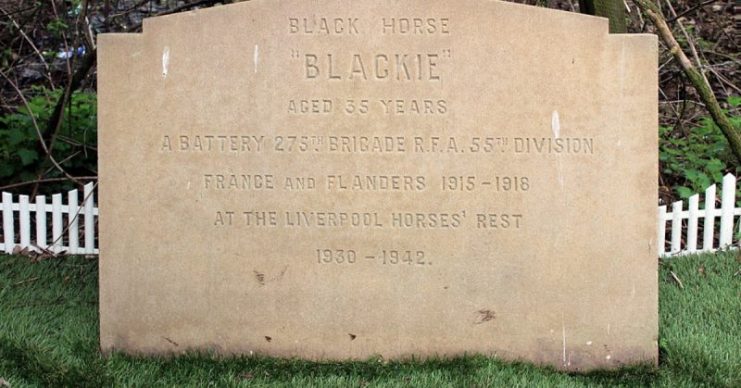
One horse survived the battles of Arras, Somme, Ypres, and Cambrai, and retired to a field near his home town of Halewood near Liverpool in England. Blackie became a local hero, leading Liverpool’s May Day Parade alongside another ex-war horse called Billy.
Blackie led the parade decorated with his master’s medals. In his will Lieutenant Wall, Blackie’s former master, had asked for the horse to be buried with his medals, and this wish was honored by his family after Blackie’s death.
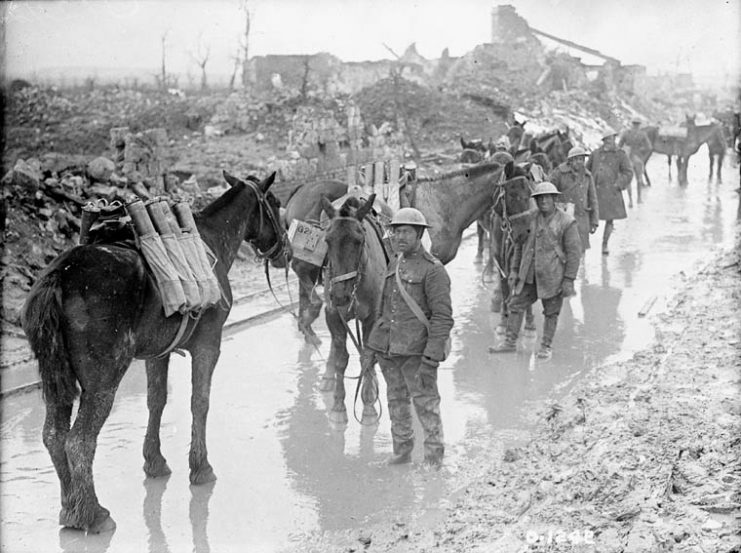
The horse served with the 275th Brigade Royal Field Artillery A Battery, 55th West Lancashire Division. His master was the war poet Lieutenant Leonard Comer Wall, killed in action in France at the battle for the Messines Ridge in which some one million pounds of explosive material had been detonated in tunnels to undermine the German positions.
While providing artillery support to the infantry and tank advance, Wall was hit by shrapnel from an exploding shell aimed at a nearby gun emplacement. Blackie sustained shrapnel injuries, and his groom Frank Wilkinson was also killed.
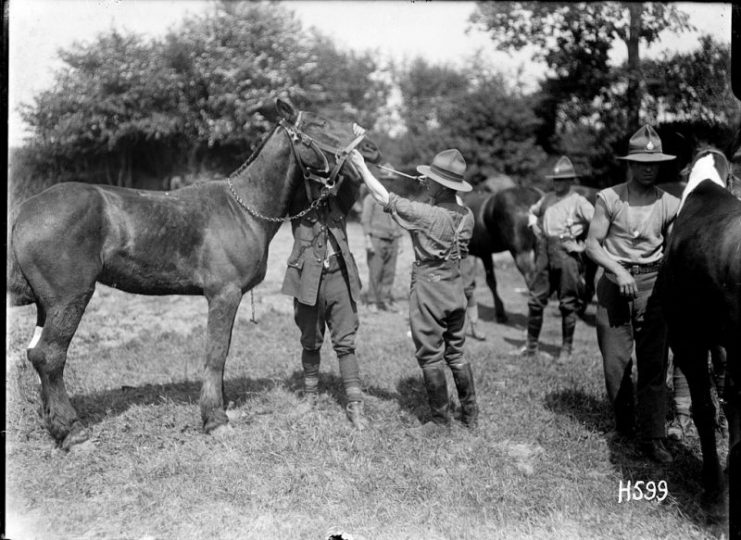
The Lieutenant was just twenty years old. Following his death a line from his most famous poem, “Red Roses,” published in the Liverpool Daily Post and Mercury, was adopted as the motto of the West Lancashire Division. “They win or die who wear the Rose of Lancaster,” the final line of the poem, encircles the divisional sign of the regiment.
The line is also carved in stone on the monument to the 55th Division in the Anglican Cathedral Church, Liverpool. In 1918 a small enameled plaque bearing the insignia and the motto was produced, to be fixed to the gravestones of the men of the division.
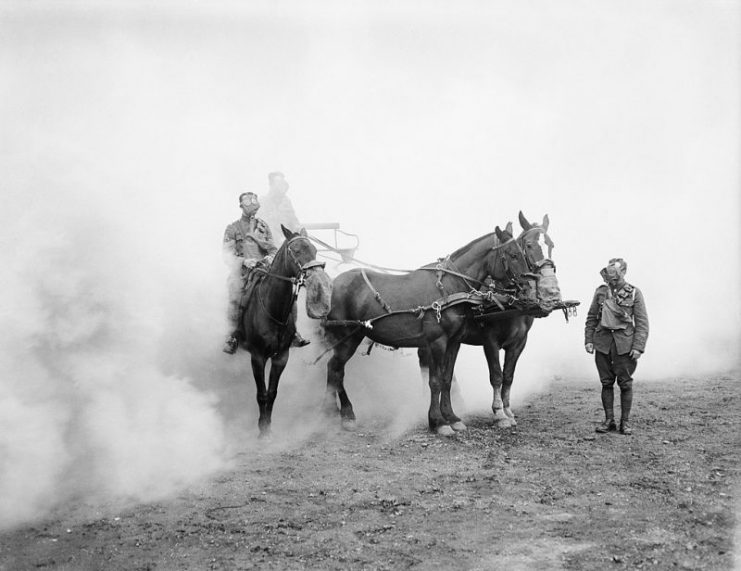
Lieutenant Comer Wall and the groom Frank Wilkinson never made it back to England and both men are buried at Lijssenthoek Cemetery. The cemetery, which was visited in 1922 by King George V of England, contains 9,901 Commonwealth burials. Twenty-four of these remain unidentified.
Today the horse’s grave has listed status granted by Historic England in 2017, but recent changes to local land zoning, triggered by the closure of a charitable animal care facility on the land, have created concerns that the grave may be at risk. The RSPCA’s Halewood branch is set to close in May 2019 citing financial constraints.
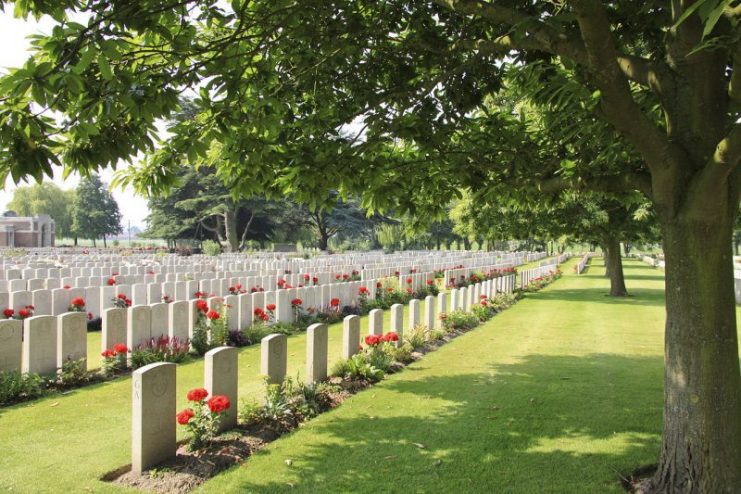
The gravestone was erected in 1942 when Blackie was laid to rest and has been undisturbed for nearly eight decades. The stone is green with age and moss, tilted by subsidence and the action of tree roots, but the words remain clear with “France and Flanders 1915-1918” at the center.
Read another story from us: Horses Really Were These Soldiers Best Friend
While the site has been protected from development all the while the RSPCA had been in occupation, the land now sits within the residential zone outlined in the local plan. Knowsley Council, the local authority, has confirmed that the draft master plan includes proposals to protect and enhance Blackie’s memorial.
So far there have been no concrete proposals from interested parties to develop the land. Consultations on the draft master plan remain open up until 5 PM on Wednesday, April 10th, 2019 for people to air their thoughts.
